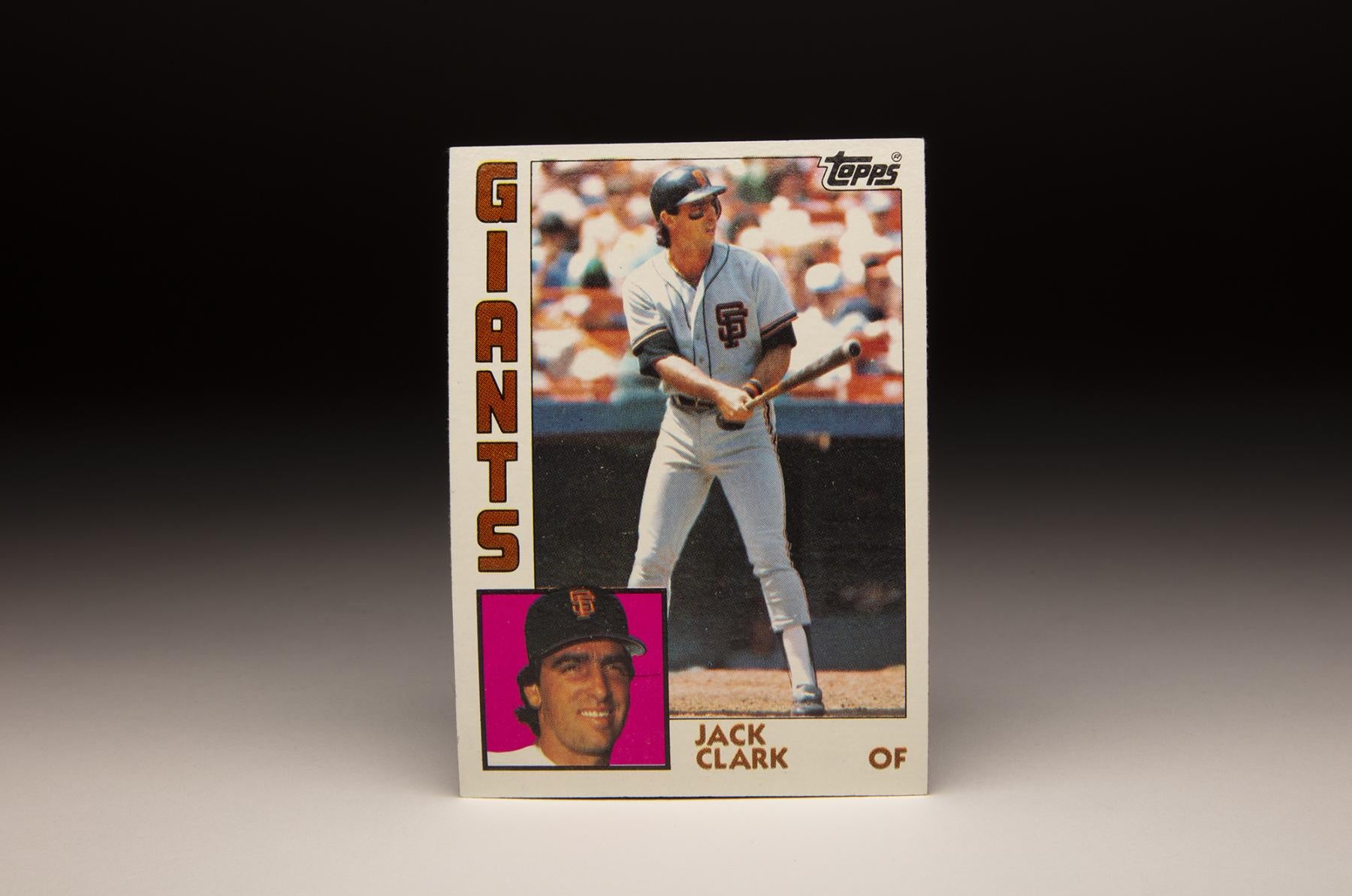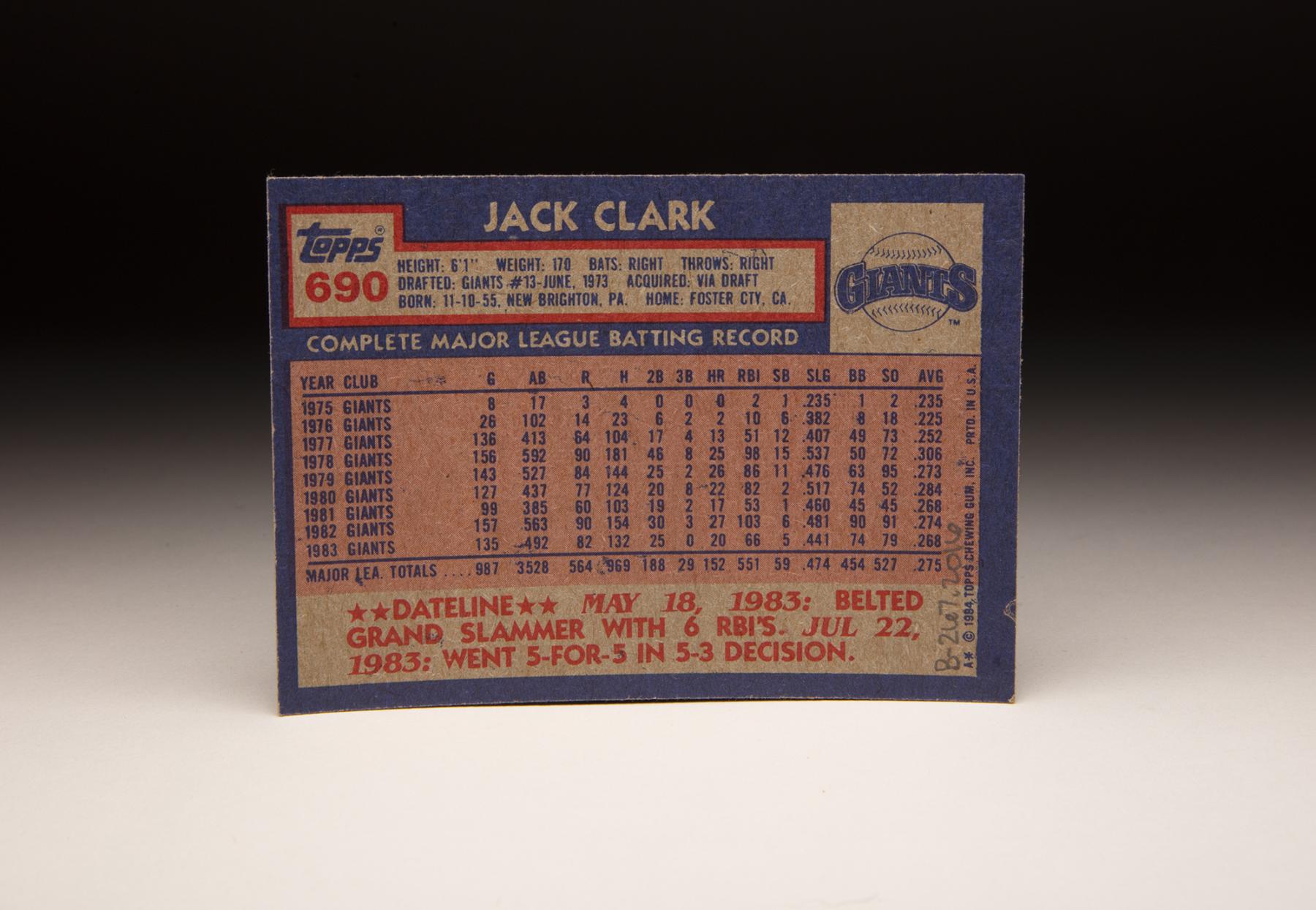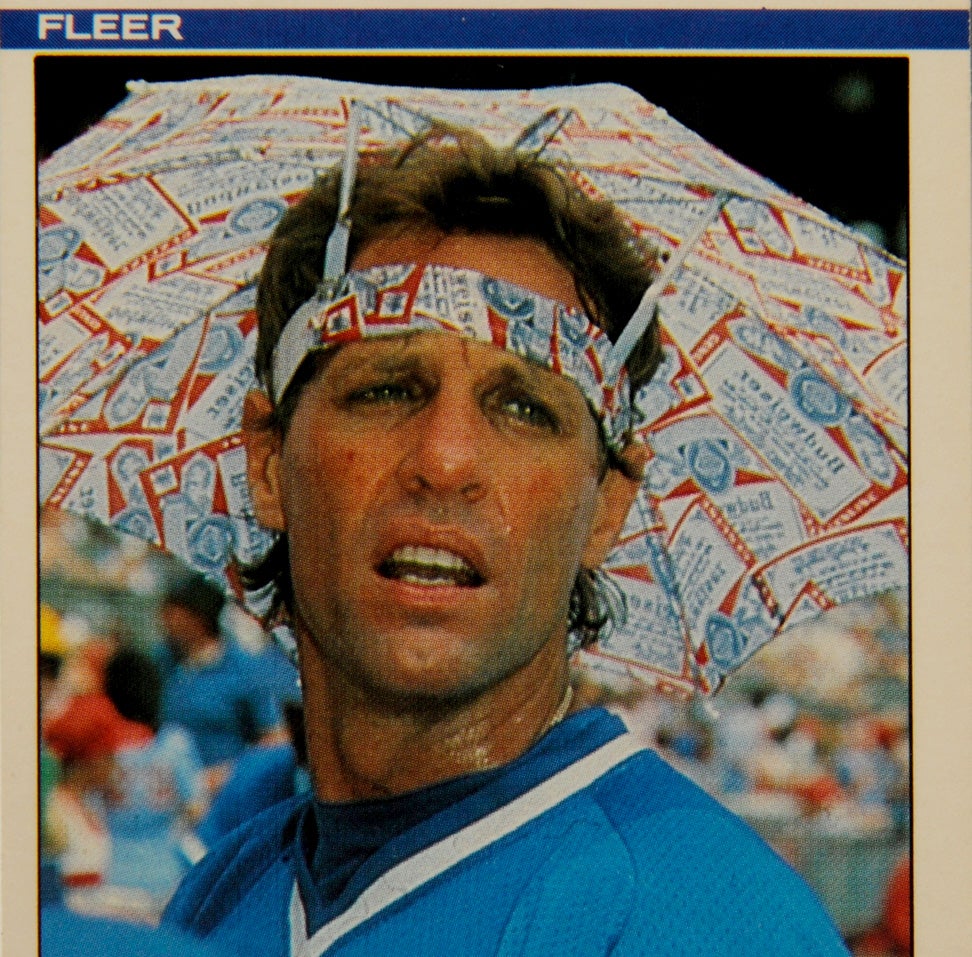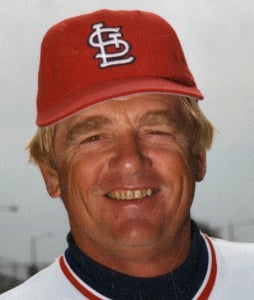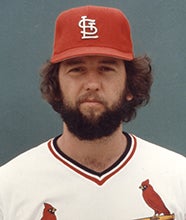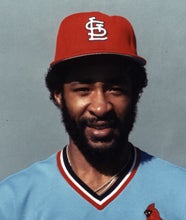- Home
- Our Stories
- #CardCorner: 1984 Topps Jack Clark
#CardCorner: 1984 Topps Jack Clark
For a period of time in the 1980s, the St. Louis Cardinals fielded the most dangerous lineup in the National League.
And among the speedsters like Vince Coleman, Ozzie Smith, Willie McGee and Tommy Herr, there was a first baseman who – when he was healthy – was the thunder among the lightning.
Hall of Fame Membership
There is no simpler, and more essential, way to demonstrate your support than to sign on as a Museum Member.
Born Nov. 10, 1955, in the industrial Western Pennsylvania borough of New Brighton, Jack Clark spent most of his childhood in Southern California. A 13th-round selection – as a pitcher – by the San Francisco Giants in the 1973 MLB Draft, Clark went from high school to the Great Falls Giants of the Pioneer League at the age of 17, hitting .321 in 65 games after the Giants converted him to third base.
The next season, Clark hit .315 with 19 homers and 117 RBI for Class A Fresno, then hit 23 homers to go with 77 RBI for the Double-A Lafayette Drillers of the Texas League in 1975 as the Giants turned him into an outfielder. He made his big league debut for the Giants that year on Sept. 12, becoming the youngest player in the National League that season.
Clark appeared in eight games with San Francisco in 1975 and then 22 in 1976 following a Triple-A campaign where he hit .323 with 86 RBI and 111 runs scored for the Phoenix Giants. Now regarded as one the game’s top prospects, Clark made the Giants’ Opening Day roster in 1977 and hit .252 with 13 homers and 51 RBI as the team’s primary right fielder.
In 1978, Clark earned notice as one of the NL’s top young outfielders by hitting .306 with 25 homers, 46 doubles and 98 RBI while finishing fourth in the league with 318 total bases. He also recorded a hit in 26 straight games, a post-1900 record for any Giants batter.
“I have two goals,” Clark told the Los Angeles Times News Service. “The first is to play in the World Series, and the second is to hit .400. And I think I’ll do both – someday.”
Clark did not lack confidence, but many veteran observers felt it was well placed.
Giants manager Joe Altobelli compared Clark favorably to Mickey Mantle, and Pirates manager Chuck Tanner thought Clark reminded him of Joe DiMaggio.
And while Clark was never known as a great fielder, his arm – a remnant of his days as a pitcher – was regarded as one of the best in the game.
Clark repeated as a National League All-Star in 1979, but was unable to recapture the all-round excellence of 1978 over his next six seasons in San Francisco. In 1984 – the year of his next-to-last Giants’ card for Topps – Clark was off to the best start of his career, hitting .320 after 57 games.
But three weeks earlier, Clark had injured his right knee. After playing through the injury for a while, Clark did not appear in a game that season after June 22.
On Feb. 1, 1985, the Giants traded Clark – who was to be team captain for 1985 – to the Cardinals in exchange for David Green, Dave LaPoint, Gary Rajsich and José Uribe. St. Louis manager Whitey Herzog immediately announced that Clark would be his clean-up hitter.
“It’s exciting to go to Spring Training with the atmosphere of being in a playoff,” Clark told the St. Louis Post-Dispatch following the trade, noting that he had never played for a division winner in San Francisco.
The Cardinals had won the World Series in 1982, but were coming off two straight disappointing seasons.
But Herzog pushed all the right buttons in ’85, inserting Coleman into the lineup in April and deftly handling a bullpen that was without ace Bruce Sutter, who had left for Atlanta as a free agent following an outstanding 1984 season.
Clark, meanwhile, tallied 84 RBI through Aug. 22, but a pulled muscle in his left side landed him on the disabled list on Aug. 27, and he did not return to the lineup until Sept. 19. But during the interim, the Cardinals acquired César Cedeño from the Reds, and the 34-year-old former All-Star hit a blistering .434 down the stretch as the Cardinals’ first baseman, helping St. Louis win the National League East by three games over a 98-win Mets team.
Healthy for the playoffs, Clark hit .381 in the Cardinals’ win over the Dodgers in the National League Championship Series. In the World Series, Clark hit .342 with four RBI in the first five games, but was held to just one hit and no RBI in Games 6 and 7 as the Royals rallied to take the title.
In 1986, a thumb injury caused Clark to miss all but 65 games of the season, and he hit just .237 in that time. But in 1987, Clark and the Cardinals offense came roaring back to life, resulting in another NL East title and World Series appearance. In 131 games, Clark hit .286 with 35 home runs and 106 RBI to go with a big-league leading 136 walks, the first time in his career Clark had reached triple digits in bases on balls. Clark led the NL in on-base percentage (.459) and slugging percentage (.597),
But Clark played in only one postseason game after missing much of the month of September with an ankle injury. The Cardinals lost to the Twins in seven games in the World Series.
Clark finished third in the NL Most Valuable Player voting that season, his best-ever showing. He signed a two-year, $3 million contract with the Yankees as a free agent on Jan. 6, 1988, but his 27 home runs, 93 RBI and .381 on-base percentage that season didn’t deter New York from trading him to the Padres after just one season in the Bronx.
Clark hit 51 home runs in two seasons in San Diego – leading the NL in walks both years – before signing with the Red Sox as a free agent prior to the 1991 season. After two seasons in Boston, Clark’s big league career came to an end.
In 18 seasons, Clark hit .267 with a .379 on-base percentage, 340 home runs and 1,180 RBI. Had the ball bounced a little differently in 1985 and/or 1987, Clark could have easily been remembered as a World Series champion.
But his legacy of line drives has stood the test of time.
“You feel like you can always put the bat on the ball,” said Clark, referring to his approach at the plate when he was enjoying a hot streak. “And to a hitter, there’s no better feeling than that.”
Craig Muder is the director of communications for the National Baseball Hall of Fame and Museum
Related Stories
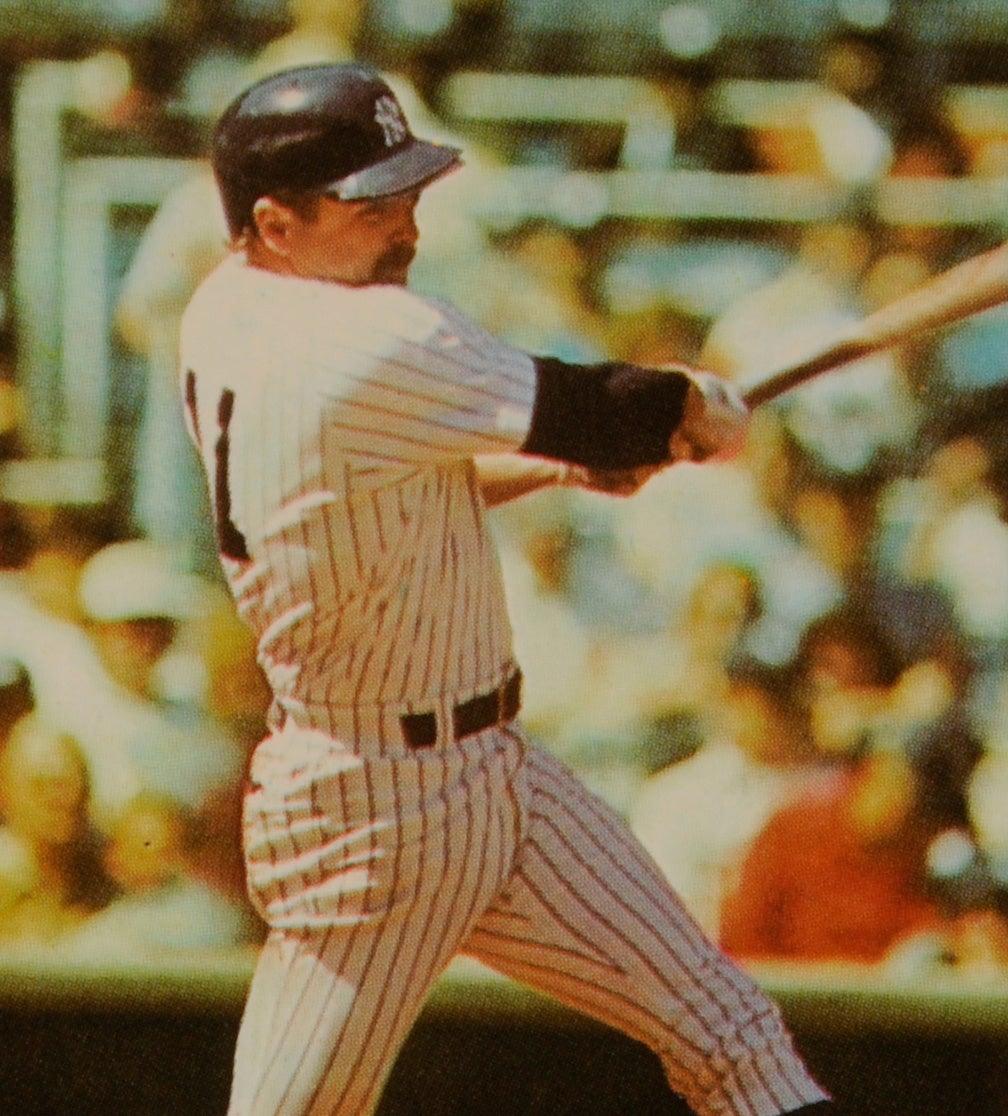
#CardCorner: 1984 Topps Toby Harrah
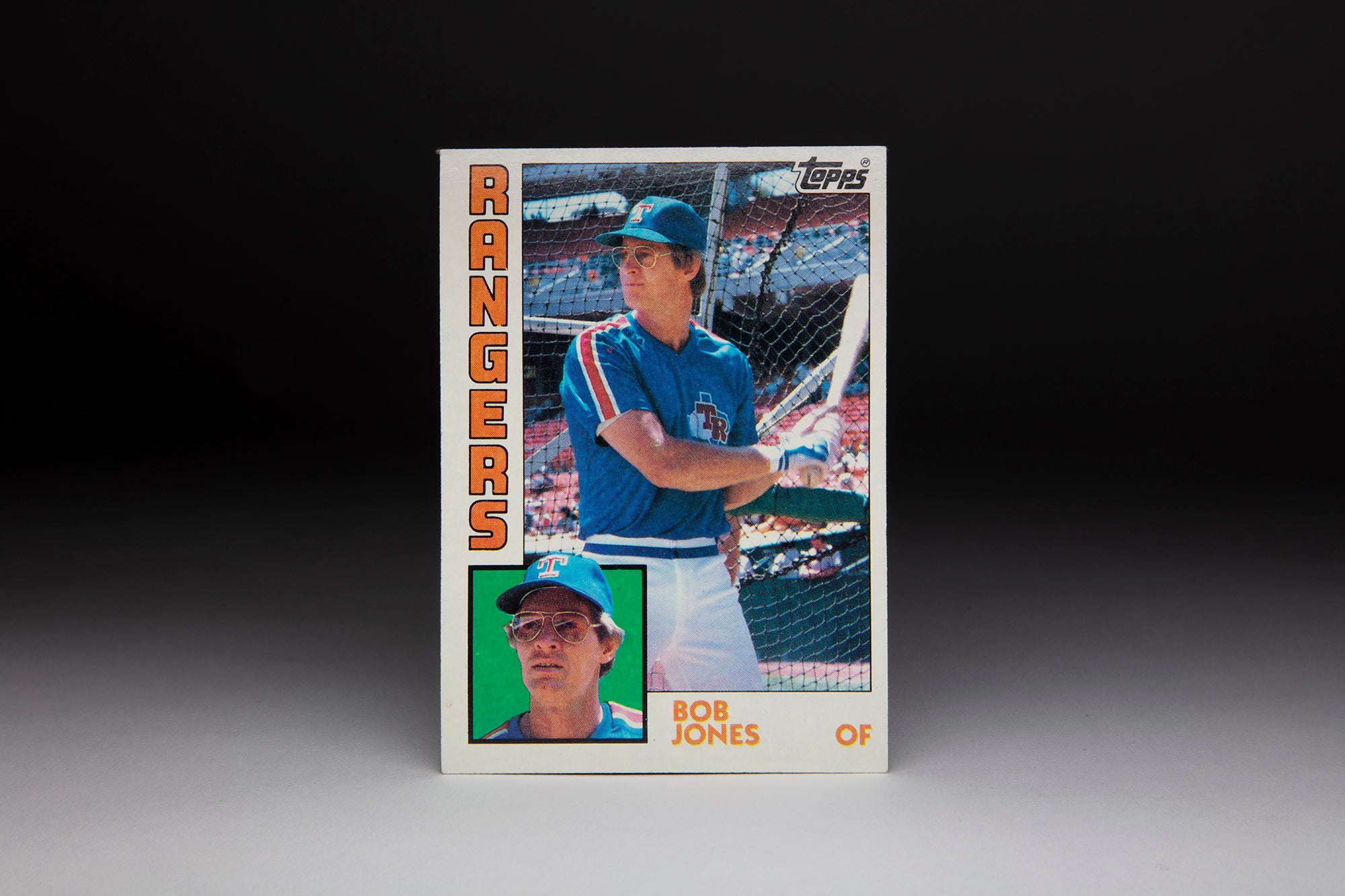
#CardCorner: 1984 Topps Bob Jones

#CardCorner: 1984 Fleer Shane Rawley

#CardCorner: 1984 Topps Toby Harrah

#CardCorner: 1984 Topps Bob Jones


